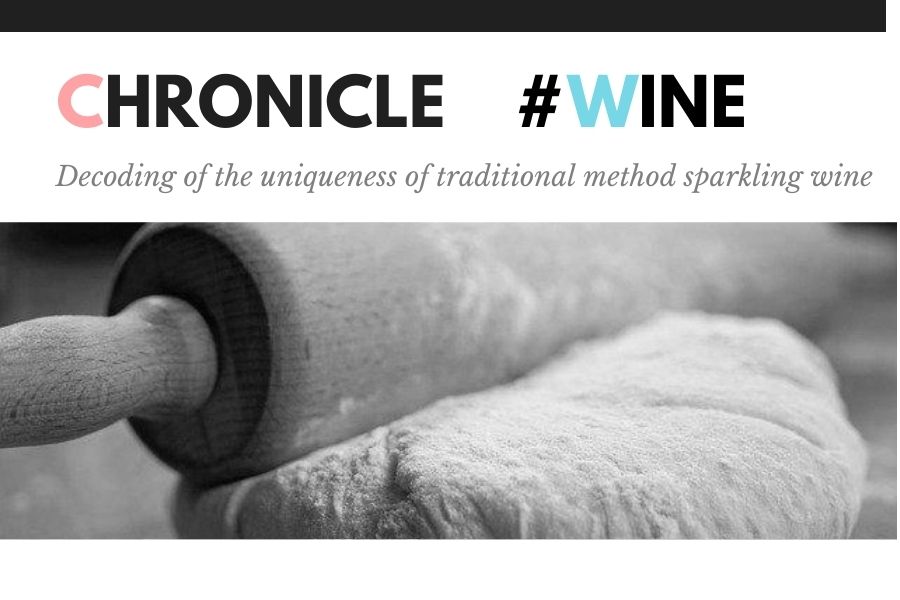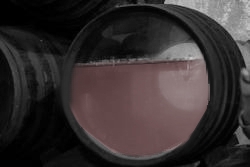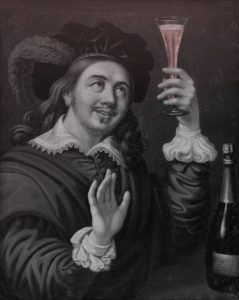Wine Gazette
Decoding of the uniqueness of traditional method sparkling wine
Bonjour, Mesdames et Messieurs. We will reveal uniquely yeasty, texturally creamy characteristics derived from lees contact during post second fermentation in-depth. Since obtained insights from previous articles about effervescence, we have understood the distinctive, yeasty characters only in the presence of traditional method sparkling wine, which is differentiated from other sparkling wine-making methods like Charmat, transfer or Asti.
What is happening after second fermentation?
Once the unique second fermentation took place in individual bottles, wineries then leave their bottles with dead yeasts in a dank cellar for a period of time as lees contact. The length of lees contact is determined by intended wine style under legal requirements in some regions such as Champagne. To illustrate that, non-vintage Champagne should age with lees in individual bottles for a minimum of 12 months while vintage Champagne requires at least a 36-month lees contact. Some utmost example like 2004 Bollinger R.D which spends almost 15 years on lees.
Yeast autolysis
Since yeasts have been fermented as alcohol, winemakers are able to opt for secondary actions of dealing dead yeasts. For instance, gross less settling and releasing free-run juice is one of the actions while intended leaving yeasts in contact of sparkling or white wine is another option. The latter has been prevailing as an intercellular autolysis as a minimal effect of less than 18 months of lees contact or an effective result of at least five years ageing on lees. It results in an elevator of wine sensory components such as richer texture, greater complexity both olfaction and gustation and more effective integration between fruit, oak and yeastiness.
During the process of passive yeast autolysis, released compounds which improve wine sensory characteristics are amino acids, glutathione, mannoproteins, peptides and polysaccharides. Produced amino acids are sensory precursors which determine aroma and flavours as acacia, brioche, bread, biscuit, pastry; released glutathione is an inhibitor of oxidisation by enzyme reduction; mannoproteins are produced by autolysis process which decrease tartrate precipitation and strengthen protein stability; Polysaccharides and peptides are textural enhancement on palate which the texture is associated with creamy or buttery mouthfeel or roundness.
Impacted wine characteristics
After the yeast autolysis occurred, resulting wines typically traditional method sparkling wines have yeasty, bread, brioche, sourdough or biscuit notes with creamy texture and complexity, all of which lift traditional method sparkling wine’s palate. Without the process of lees contact or yeast autolysis, they are unpalatable wine with effervescence which are made from neutral, extremely tart base wines.
All in all, length of lees contact positively correlates to traditional sparkling wine’s nose, palate, complexity and texture.
References
https://pixabay.com/get/53e1d3474856ac14f1dc84609629367f103bdfe0504c704c7c297bdc944dc35c_640.jpg.
https://www.champagne.fr/en/from-vine-to-wine/wine-making/maturation-on-lees.
The Oxford Companion to Wine 4th Edition, Robinson. J and Harding. J.
https://www.awri.com.au/industry_support/courses-seminars workshops/seminars-workshops/chardonnay-winemaking-trial/winemaking-treatment-lees-contact/.
https://winefolly.com/deep-dive/what-are-wine-lees-sur-lie-explained/.
http://shutterstock.7eer.net/c/13749/42119/1305?u=http://www.shutterstock.com/pic.mhtml?id=1607918815&subid1=search&subid2=bottom&subid3=mosaicapi&sharedid=photo-search-bottom.
https://unsplash.com/photos/DyBM95141iM.




